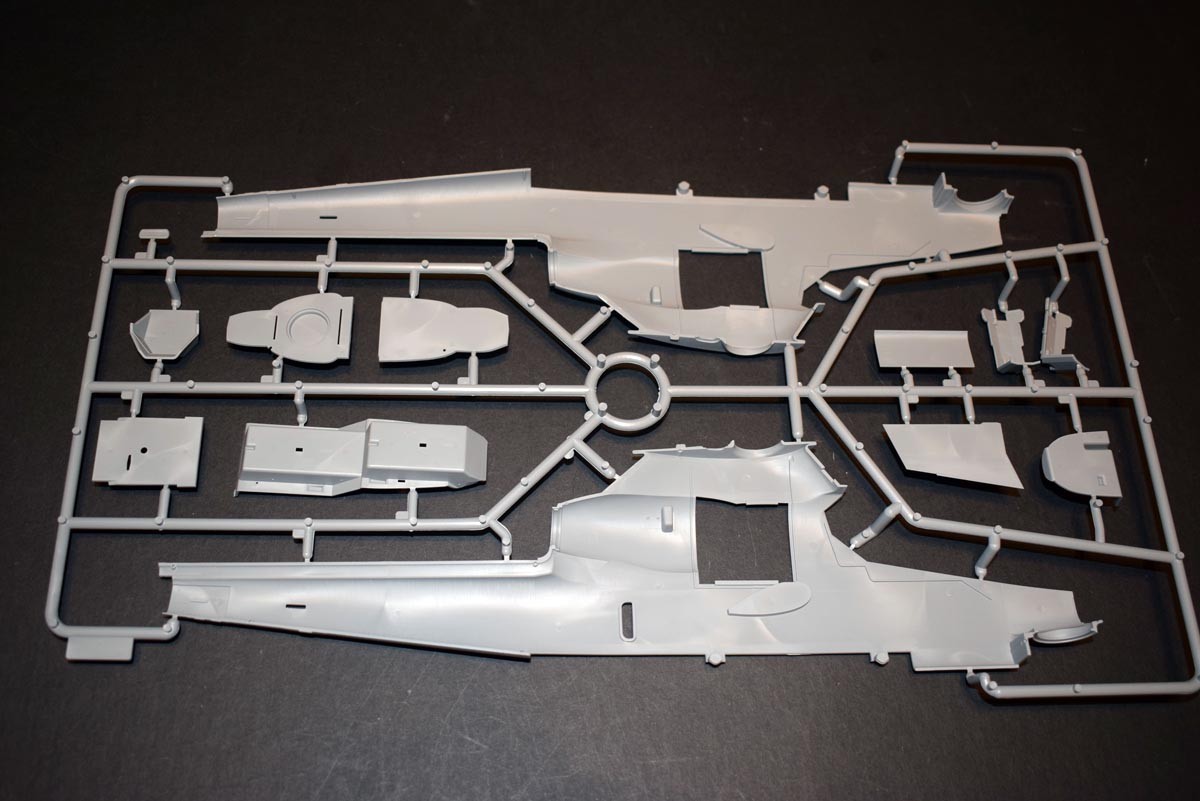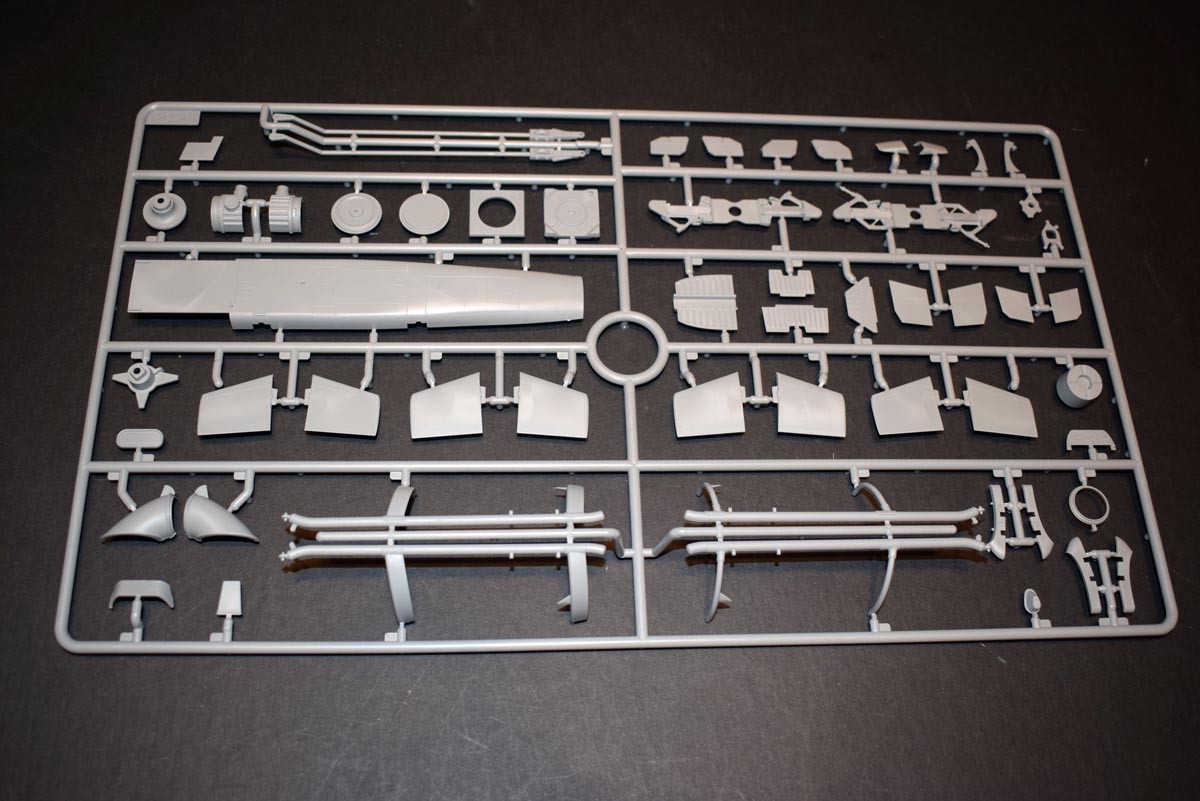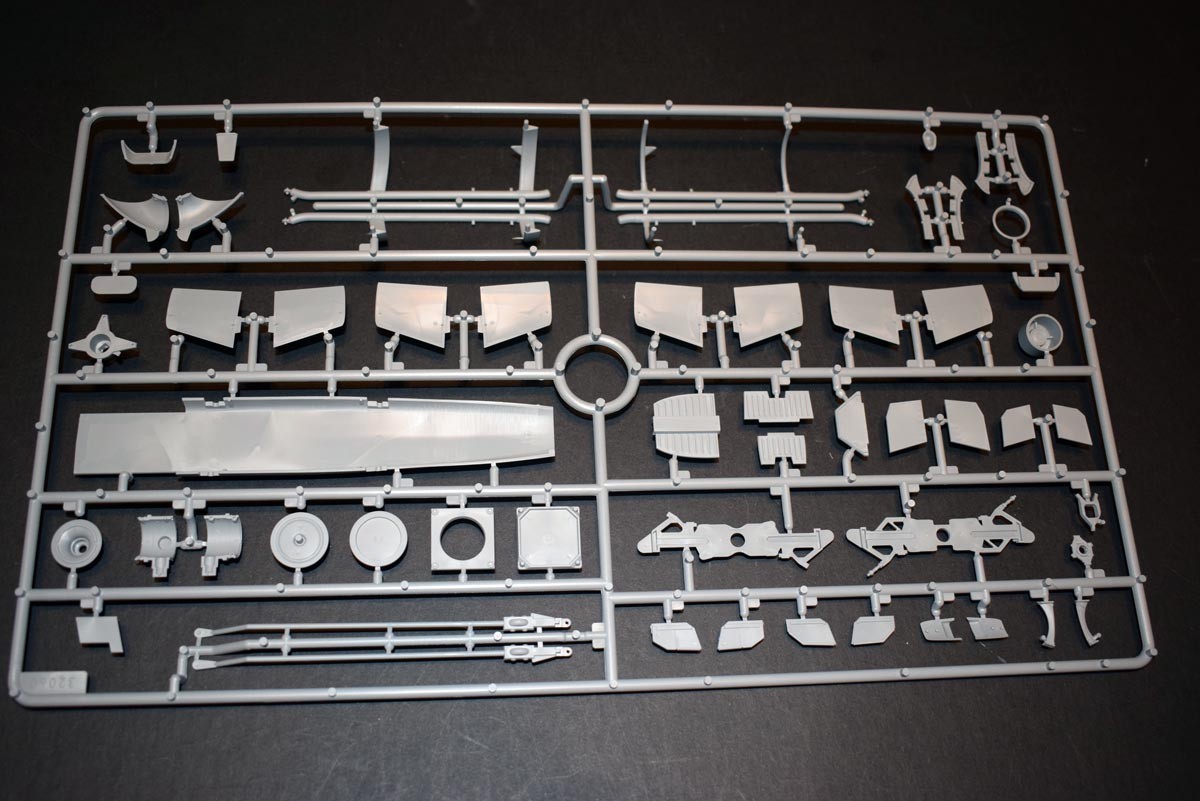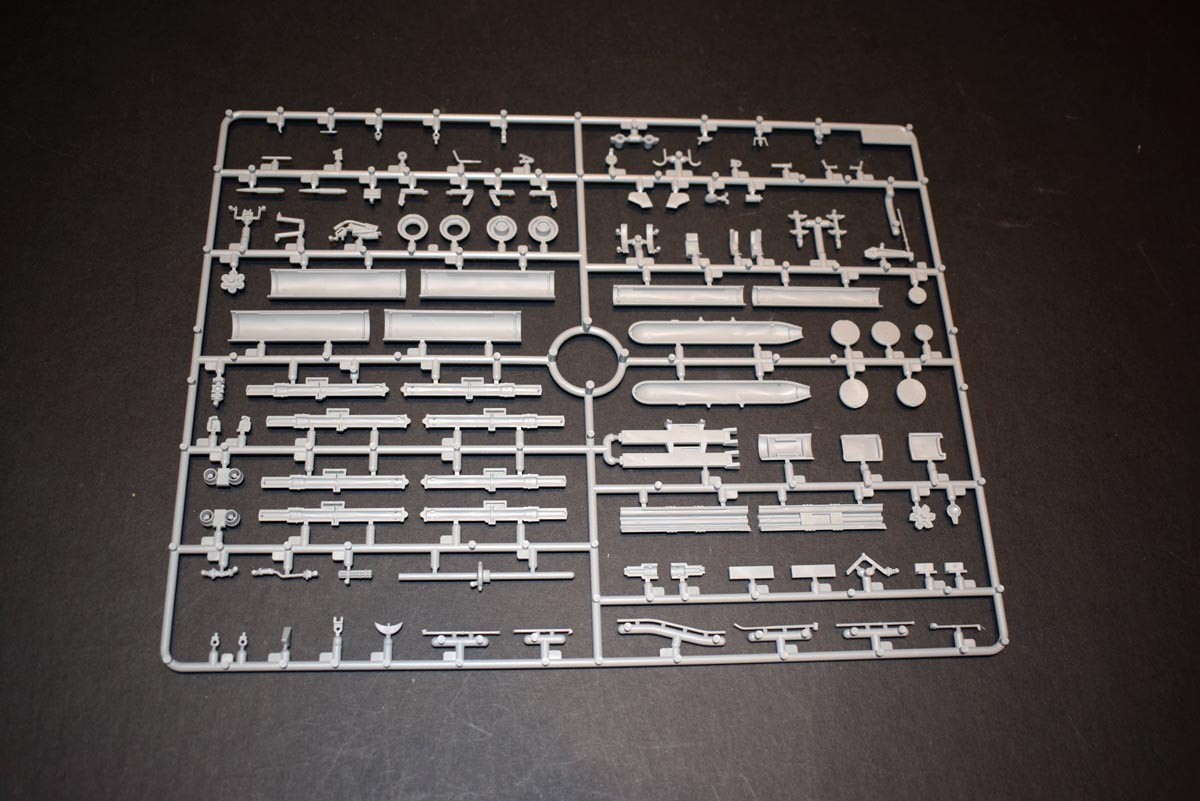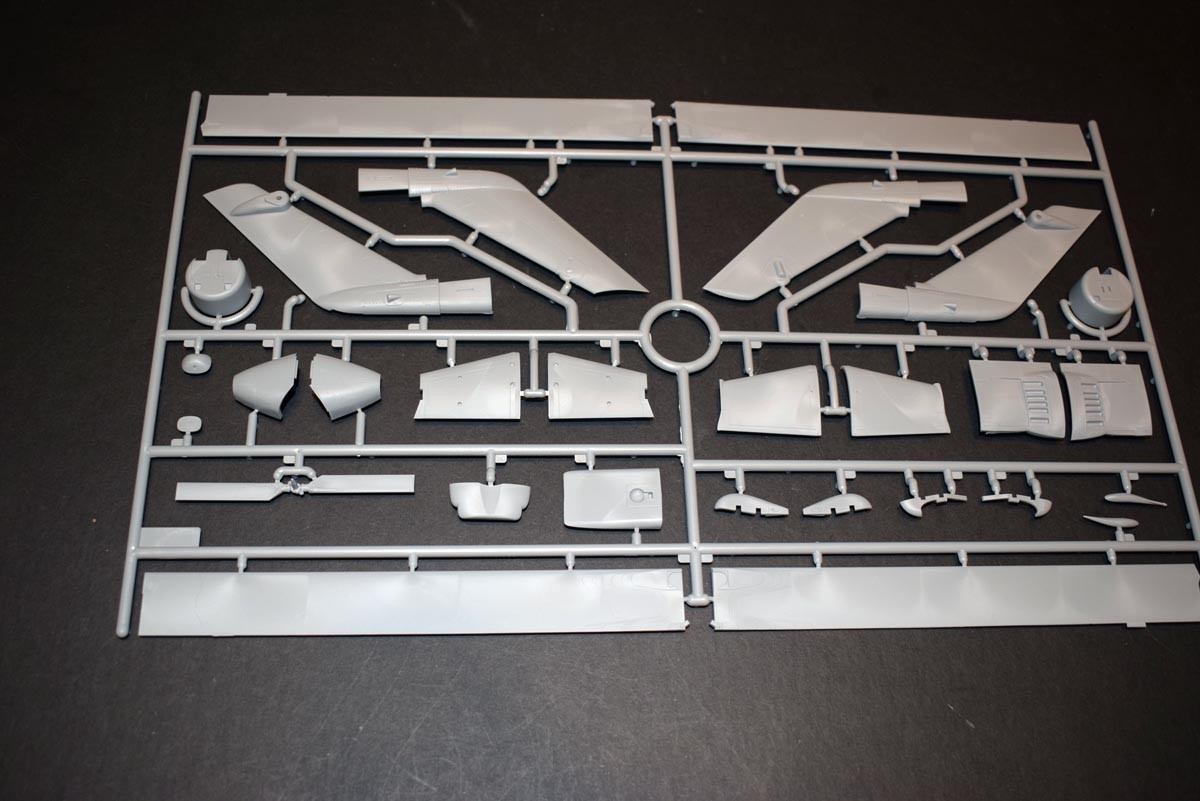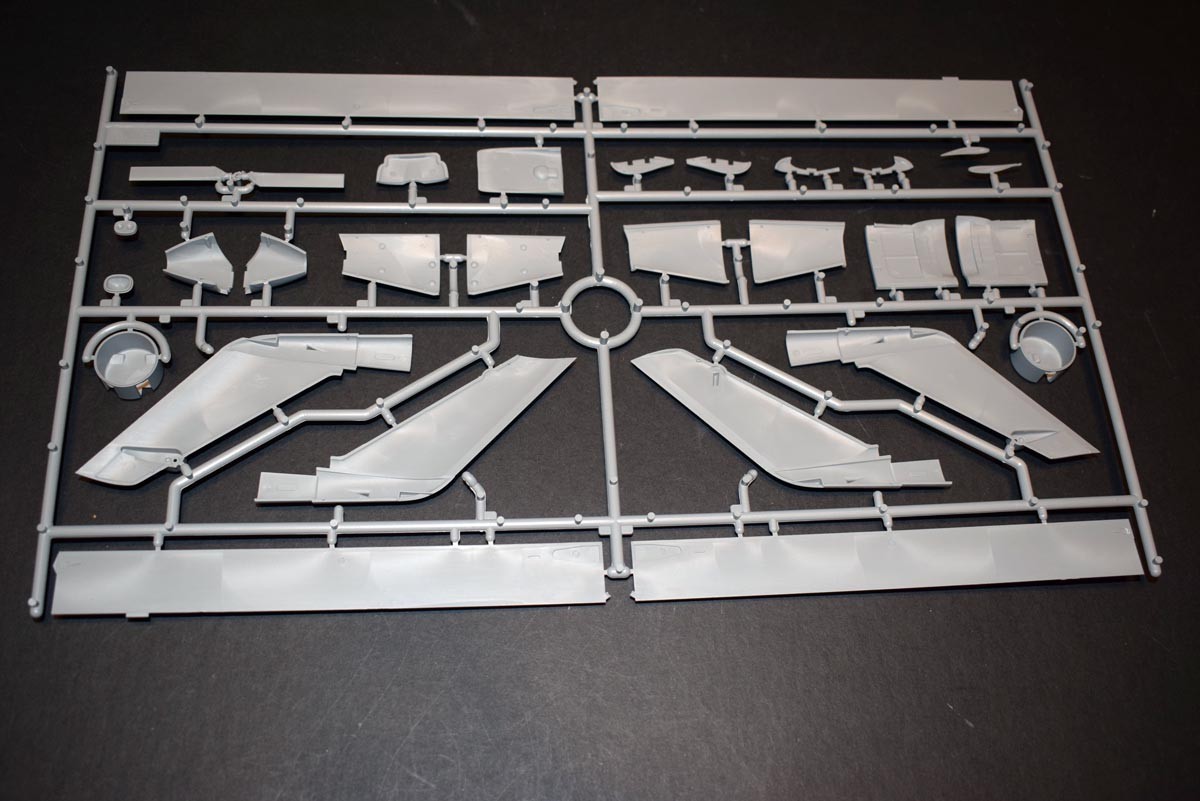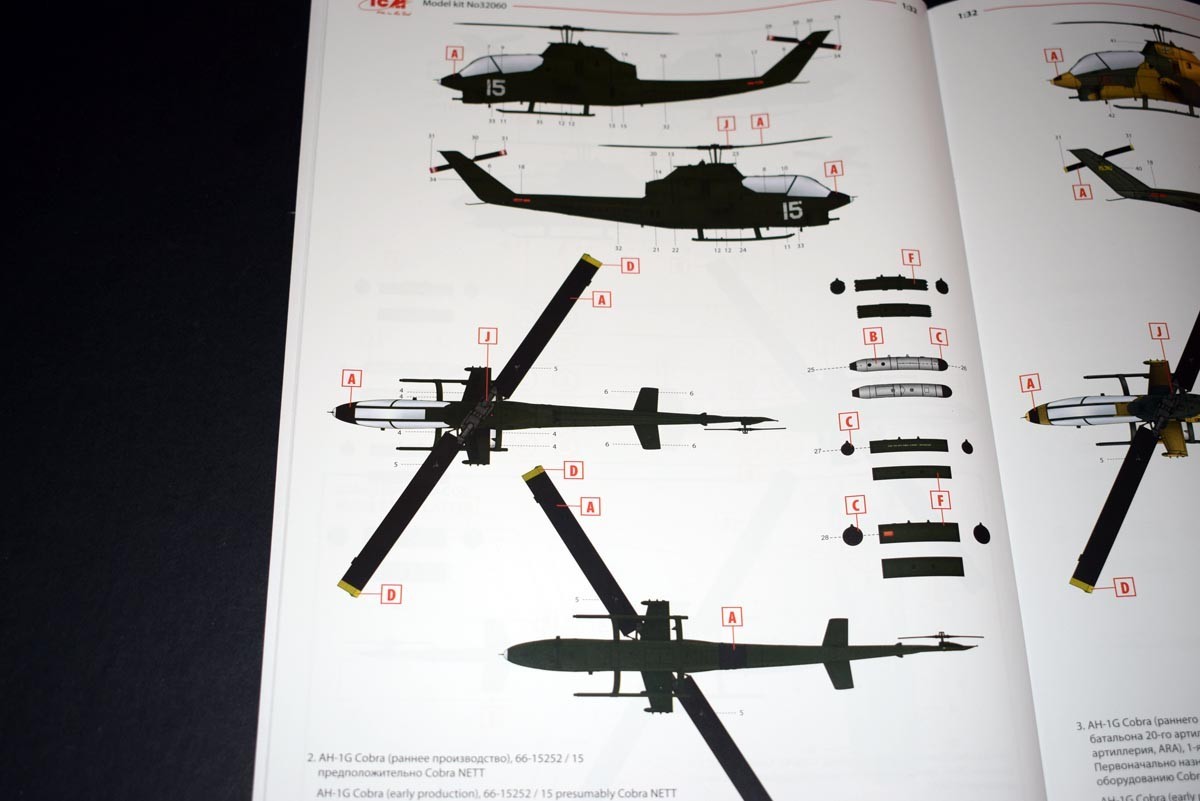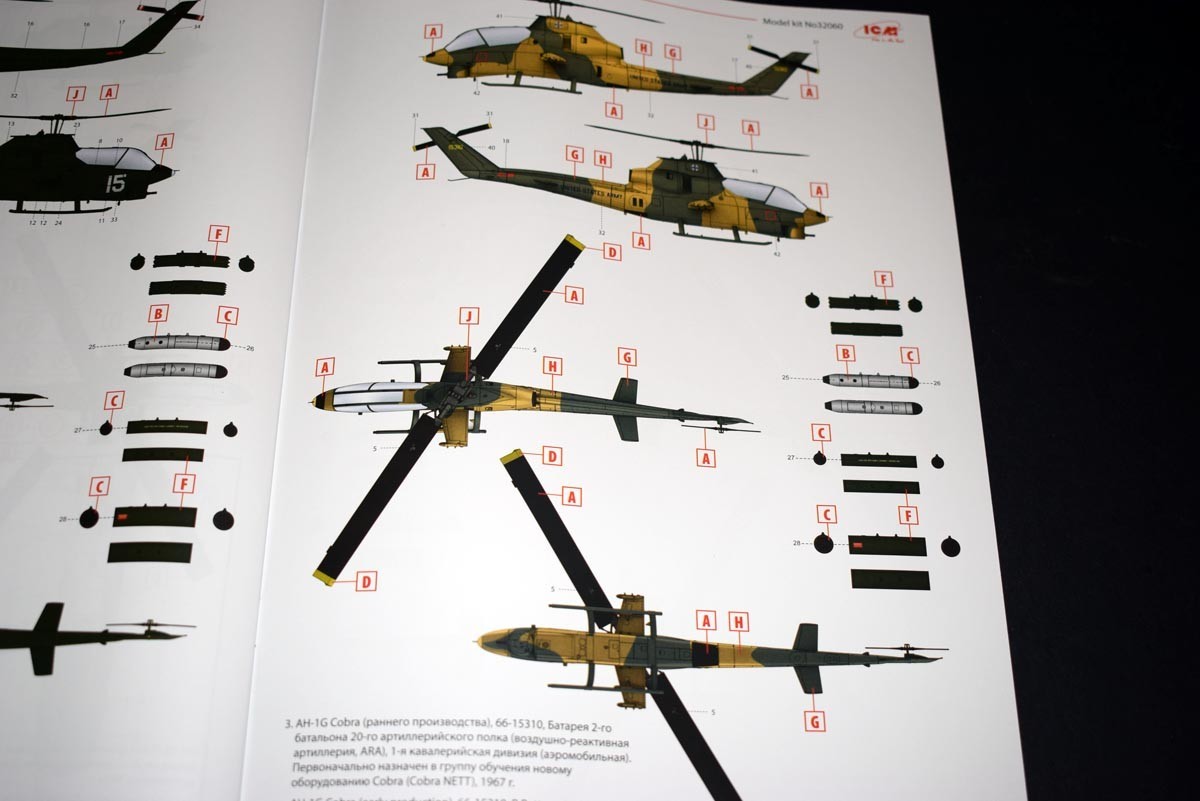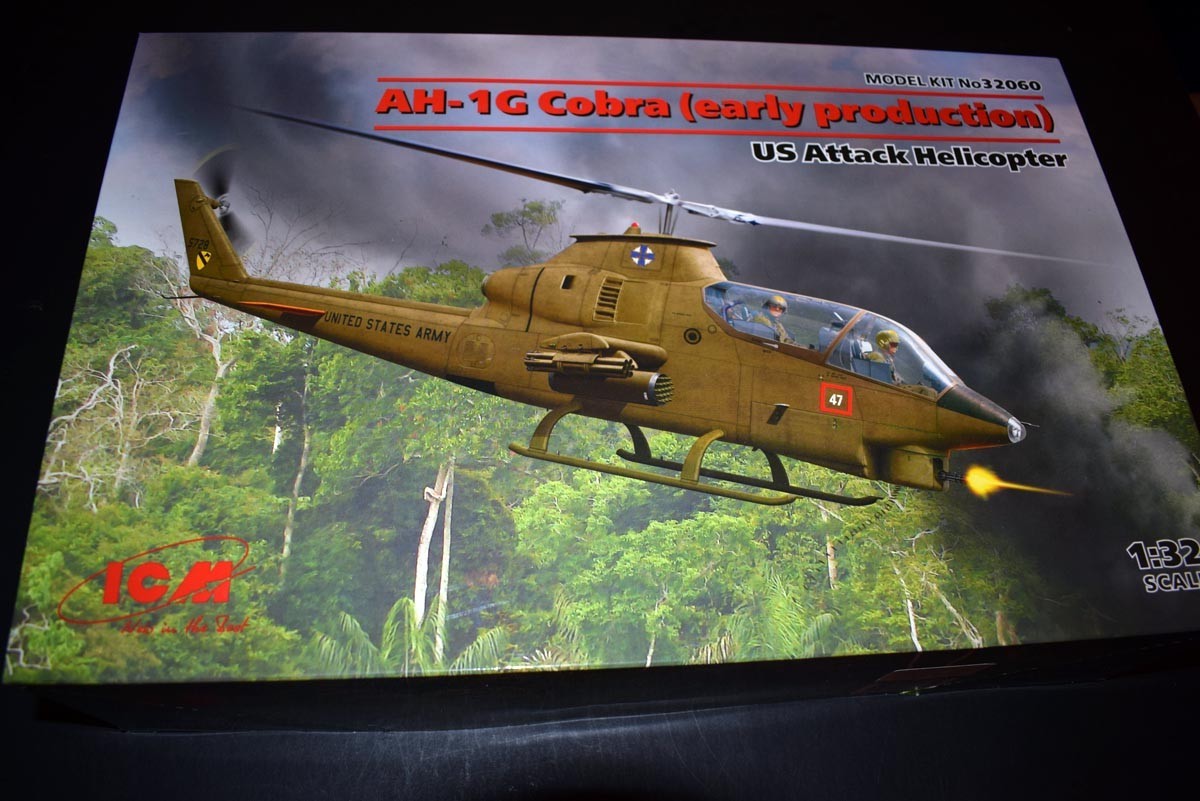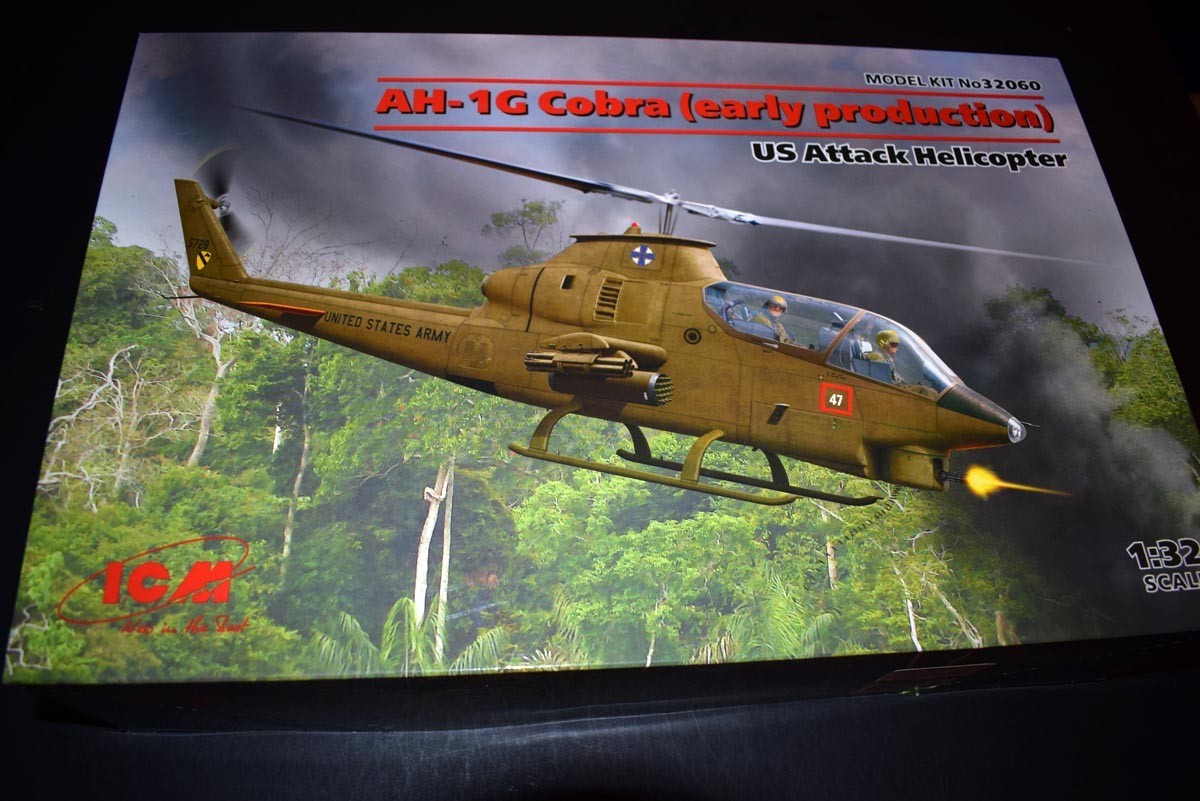
Introduction
The following introduction is as supplied by ICM:
In March 1965, Bell began development of a close air support combat helicopter. It was developed using the engine, transmission and rotor system of the Bell UH-1 Iroquois. Eventually designated the AH-1G and named the Huey Cobra. It began supplying to the US Army in June 1967 and was used in combat operation in Vietnam, in September 1,127 AH-1G’s were delivered to the US Army, including the TH-1G duel control helicopters. The serial AH-1Ghelicopter , which became the base for further modifications, had a single-rotor design, one GTE and a ski landing gear. The fuselage was all metal, half monocoque type. The cockpit is a two seat, with the shooter and pilot seats located one behind the other.
Review
This model arrives in a flip top cardboard box with a separate card lid showing the artwork for the model. On opening you are presented with a re-sealable plastic bag with an instruction booklet containing decals for the model. There are some flow lines on the larger mouldings, but these do not look or feel to have marred the finish of the mouldings concerned. There is no flash present anywhere on the model, and even the seams lines are very light and should be easily dealt with. All of the parts look to be easily accessed where removal is concerned, with care being needed on the really fine parts offered in order to avoid damage.
Looking over the cockpit of the cobra offering from ICM is a positive experience where the early cobra is concerned. The seats are correct but surprise no harness detail, something ICM really need to address in these large scale models. The instrument panels are very well done with the pilots console even having the ashtray present on the right side; I think ashtrays are even disappearing in cars now, that said the detail is a little weak in this regard maybe due to ICM not knowing what it was I suspect. The gunner in the front does not get such a well equipped dash and will have to settle for chewing gum and smoking enemies. ICM has provided decals for the instrument panels, but I am sure Eduard and the like will release alternatives soon. Control wise everything appears to be correct and so all told a well done cockpit bar the missing harness details. Of course there is plenty of scope for the modeller to dress things up.
Moving to the power for the model and I am surprised that ICM has not included a full engine, which is very odd where ICM is concerned; however looking at what is provided and you get the gearbox and the rotor controls, detail is a little thin on the ground here and I think the reason may be that even though I have a far reference on the cobra family and Google has a wider scope finding decent pictures is like hunting for chicken’s teeth. The main rotor blades is made of an upper and lower moulding that may make a good join hard to obtain.
The fuselage of the model has a separate tail and belly and I believe this is due to future releases having maximum use of the current mouldings. The surface detail has a good level of detail offering raised rivet detail and recessed panel lines; the raised detail is over scale I feel, but the detail would be all but invisible in real life and would also get complaints. There is a separate tail for the version with the tail rotor on the opposite face this being the reason for it and as I said earlier for alternate kit releases. The belly of the aircraft is in three pieces and so may cause some issues when trying to get a clean fit. The nose of the model offers the choice of a solid nose or one with landing lights in it; if you are building the earliest versions the glazed nose is the way to go.
The skids for the cobra are correct, just make sure you use the set indicated. A nice touch by ICM sees the inclusion of the wheel sets used for moving the aircraft around on the ground and the towing assembly is also provided. The glazing is very well tackled as regards its thickness and you have the option of finishing the model with the access windows open or closed. I am also pleased to see ICM included a mask template for this large glazed area of the model.
The offensive weaponry is another area where you need to decide if you are looking to go earliest or early. The chin turret has the option of single or twin weapons stations; if you go earliest you should go with the single weapons station turret the TAT-1-2A turret, but could be used with either nose option offered by ICM. If using the M28 turret with twin stations the solid nose would seem to be the only option. The weapon mounted in the single turret was a GAU-2B/A Mini gun and paired with an M-129 40mm grenade launcher in the twin turret. On the stub wings there are four weapons stations that can be used for a huge mix of weapons over the service life of the Cobra and ICM has provided four very good options for a cobra of this period. You have the options of:
4 x XM-159 19 tube rocket pack
2 x XM-157 7 shot rocket pack
2 x XM-158 2.75 inch forward firing rocket pack
2 x M18E1 7.62mm mini gun
Reference Material
ISBN-1-84176-606-2 US Army AH-1 Cobra Units in Vietnam –Jonathon Bernstein
ISBN 0-89747-438-4 Walk A Round AH-1 Cobra – Wayne Mutza
Four finishing options have been provided for these models which are as follows:
AH-1G Cobra, 5728/47 “Blue Max” 2nd Battalion, 20thArtillery Regiment, ARA
AH-1G Cobra, 66-15252/15 presumed Cobra Nett
AH-1G Cobra, 66-15310, B Battery, 2nd Battalion,20th Artillery Regt, 1sy Cavalry Division, 1967
AH-1G Cobra, 67-15762 “Executioner”, 235thAC, Capt Lou Bounault, Daub Ting, November 1969
Conclusion
This 1/32nd scale AH-1G Cobra Early Production from ICM is I believe their first assault on the Helicopter modeller, and speaking for myself I would give them a solid B+/A-. The moulding quality of the offering is of a high standard and gets ticks all round from me. It is for the content that I knock points off of them due to the lack of harness detail that in a model of this scale with such a large glazed area has to be present. The weapons options and the attention to surface detail is especially good. I am sure there are some areas I have missed that the purist will pick up on and point out, but for me I would look for some cockpit detailing set and be happy with the rest. Some have complained about the scale of 1/32, but this does seem a common scale especially where aircraft are concerned.

